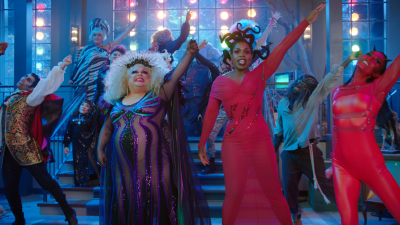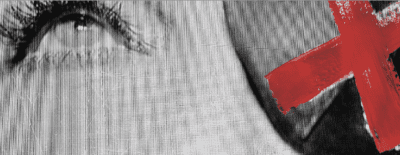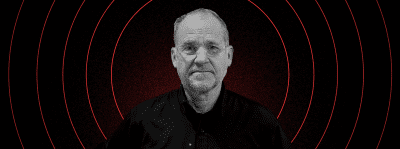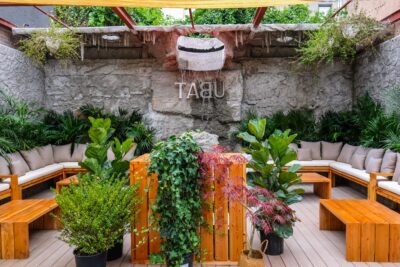Kemi Ilesanmi, curator of people, looks back on 10 years at the Laundromat Project
Ilesanmi, executive director at the vital Bed-Stuy based community arts non-profit, will be moving on after a decade there
Like what you’re hearing? Subscribe to us at iTunes, check us out on Spotify and hear us on Google, Amazon, Stitcher and TuneIn. This is our RSS feed. Tell a friend!
For the past 10 years, Kemi Ilesanmi has been the executive director of the Laundromat Project, a very cool community arts non-profit currently based in Bed-Stuy. The Laundromat Project, or LP, has commissioned and trained upward of 200 multiracial, multigenerational and multidisciplinary local artists in making art that tackles issues including gentrification, immigration, climate change, queer safety, and food justice.
Ilesanmi has helped grow the organization and she, most recently, has found it a long-term home. Last year her (and her team’s) efforts were rewarded by an unsolicited donation of $2 million by billionaire philanthropist MacKenzie Scott, a game changer for the LP community. And now, she is stepping down from the post she has held for a decade at the end of the year.
This week Ilesanmi, who never seemed destined to run an arts organization, joins me on “Brooklyn Magazine: The Podcast.” Despite having grown up in Lagos, Nigeria, among a family of artists, she is not an artist herself, nor does she hold an arts degree. In this conversation, we talk about her background and upbringing, what the LP has accomplished under her watch … and what’s coming next.
The following transcript of this podcast episode has been edited for clarity and flow. For the full conversation, click play to listen above or subscribe wherever you get your podcasts.
For folks who might not be familiar, what is the Laundromat Project?
The Laundromat Project is a community-based arts organization headquartered in Bed-Stuy, but working across the entire city of New York. And we advance artists and neighbors to be change agents in their own communities. We also have a fellowship for artists who want to learn how to work in community, ethically and joyfully.
The idea was to actually set up shop in a laundromat because its a community gathering place, but it didn’t work out that way. Your founder, Risë Wilson opened up community spots all over the city. Is that right?
We like to say that we were founded at Risë’s kitchen table on McDonough Street back in the late ‘90s and early “oddies.” She was looking for a way to connect art and artists with everyday people and thought very early on about the laundromat as a space in New York City where different kinds of people gather. Her other really fantastic idea for its moment and its time was that we would actually own and operate a laundromat that could then the profits could be put into the non-profit that was actually doing the art making.
Like the actual inverse of money laundering. It’s generating money.
Yes. Absolutely. So we were incorporated in 2005 and at the time, which is what around when I joined the board, we were a board of Black women, all of us, we didn’t have the economics to actually be able to buy a building. So very early on we pivoted to this idea of actually going citywide, working with artists of color in communities of color all across New York City. We actually decided to think of laundromats as metaphor, a place where community gathers in knowing that different communities gather in different places.
And over the course of the past years, the Laundromat Project has commissioned and trained upwards of something like 200 multiracial, multi-generational, multidisciplinary — lots of multis – local artists. Can you talk about some of the works that maybe people might have encountered or seen or some of the topics they’ve tackled in meaningful ways?
One would be a project that actually started in Bed-Stuy, the artist, Lizania Cruz, did a project called “We the News.” It started early 2017, so this was immediately after Trump had been elected, and she wanted to work with black immigrants across New York City, many of them in Brooklyn, and gather their stories, hear their stories of how they got to New York, what was their migration pattern, where did they stop along the way, what brought them and what keeps them in New York. And so she worked with people to create their own zines and she did popup libraries or popup bookstores in Restoration Plaza, Queens Museum. It went to Pittsburgh and it went to Miami and she had snacks, plantain chips, my personal favorite.
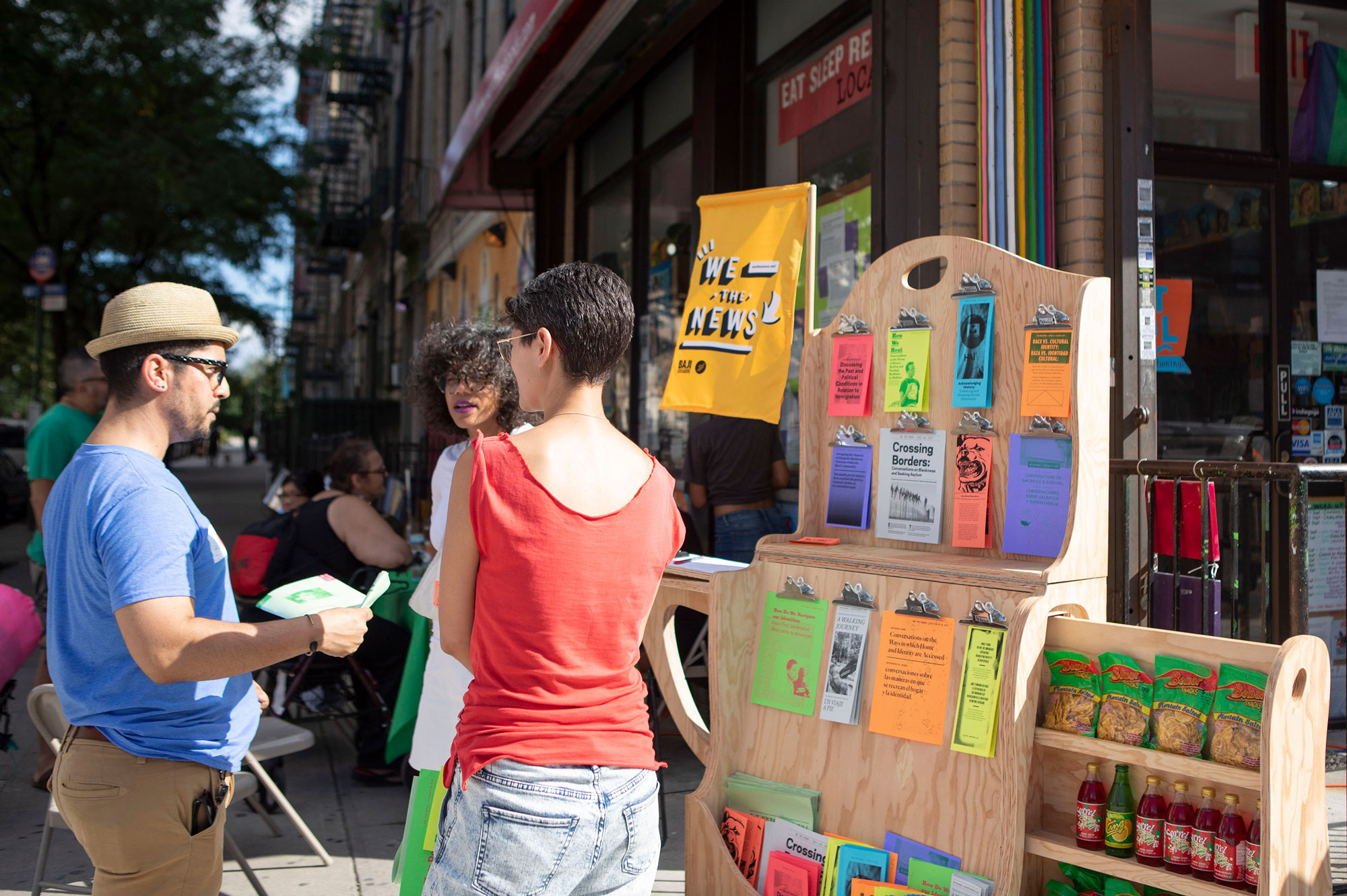
Happening at Word Up Community Book Store, Washington Heights, NY. 2018 (Courtesy Lizania Cruz)
It was a very cool project. On a recent podcast, it was only a couple episodes ago, we had as a guest, Kai Avent-deLeon, who runs Sincerely, Tommy and is a co-founder of Building Black Bed-Stuy. And we had a conversation about the changing nature of the neighborhood that you guys are located in. It’s a very hard conversation to have. There are a lot of intense feelings. I wonder what you guys are doing in terms of the G-word debate, gentrification and how that’s affecting your community.
Issues of displacement, gentrification, and community and cultural preservation have been part of our projects almost since day one. We support artists who want to figure out ways to pull up this topic to make it visible. Someone like Chloë Bassi who did a project a number of years ago that was looking at what people loved and cared about in the neighborhood. Kendra Ross, who’s doing this project of imagination and Afrofuturism is an act for us of being able to engage by supporting Black residents of the neighborhood and artists, people of color more broadly. We think a lot about what cultural preservation looks like.
We actually, in Covid last year, initiated a new program called “Create and Connect” and its thousand-dollar micro-grants that we give to creatives in Bed-Stuy specifically. And again, with this concentration or this focus on artists of color, black artists, folks who’ve been there for generations. Not every artist that we gave this to needed to satisfy that, but the majority of them do.
Last year you guys received a gift from the philanthropist, MacKenzie Scott. She gave that LP $2 million just out of the blue. Can you talk about that moment? What was it like when you got that call?
First of all, it started with an email that definitely looked like spam.
“I’m a Nigerian prince.”
And I’m Nigerian! But I eventually did respond and got on the phone call and it was with one of her staff members, not with her directly. And they said, “We’re giving you $2 million. We really love what you’re up to and want you to be able to do more.” There’s just no words that can really describe that. It felt so beautiful to be seen, to be supported, and to not need to do anything but what we do best.
Right off the top, you’re giving money away, right? You’re giving grants to artists.
Absolutely. Our first instinct was, “Wow, this cannot be money just for us. How do we share this?” The structure I would say for me was about tithing. My grandmother jumped into me.
So we wanted to, number one, give that beautiful feeling that we had had on the phone call of giving money away to some other POC, people of color-led organizations and entities in the city that we were in community with and give them that same phone call and say, “We’re giving you $10,000, do with it whatever you want.” Which was amazing. It felt so good. And one of the people we called had just not gotten a grant for 10,000 the week before. So he’s crying, we’re crying, happy tears. So that was amazing to be able to say to Black Space and Literary Freedom Project and all the other orgs, “You deserve this. We see you the way we were seen.”
And then we said, how many former staff members, interns have we had? Who were some of the key consultants that helped us get to this moment, including our first grant writer that helped us write those first grants that got us here. So we made a whole list and ended up with about almost 300 people that we wrote $500 checks to. And it was right before the holidays last year. Someone’s mother’s roof had just needed repairs, right then she used it to help her mom pay for that. People used it on art projects they were doing, someone bought a desk.
What did the pandemic teach you as a leader about running a nonprofit in times where everything is shut down? There was all this talk about essential workers and you’re rooted in the premise that art is essential, but for so many people it comes obviously after food, after lodging, after health. What was the pandemic experience for you?
It was incredibly intense. Interestingly enough, the Laundromat Project pivoted very quickly to being online. We were in the middle, we had just started our fellowship program and we said to the artists, If you want to continue this, which would normally have been in-person sessions, we’ll continue it with you, we’ll do it. And they knew every other Wednesday they would learn how to build community or how to think about art making. So we felt like we were supporting them and we did our first micro-grants to them at the end of that summer, like here at the time, 500 bucks, do something, whatever you need to do with this, hopefully, some of that is just making art and being an artist because we need you right now.
We actually gave grants to our staff so that they could gift it to organizations or entities they saw doing the work. We gave them utility stipends because suddenly we’re all needing unlimited bandwidth that we didn’t need previously. We gave people time off. Most of our artists had lost income, if not every single one, and significant income. For the folks who in this time of crisis, making work and being creative in that way was something that they wanted to do, we wanted to give them the support to do it. We gave away 27 micro-grants in April and May of that year in 2020.
We have a beautiful storefront with our huge window and we decided that every year we would commission an artist with local connections to make an image that we’ll put on the window. So our very first one is by Destiny Belgrave and it is a beautiful, colorful image of an elder holding someone. And she has a short poem about being held by our ancestors. It spoke to the moment, the need for care, the need to remember that we come from amazing stock that got us through so much before as a neighborhood with a lot of Black folks and a lot of people of color and a lot of immigrants. We’ve seen suffering before and we were going to be able to get through this. And it’s that little thing to just put into the universe and say, here’s a moment as you’re walking down the street and catching the bus and going to school or whatever people might do, we wanted to give people a moment of respite, a moment of care, and maybe even a little bit of joy. And I see people stop and take photos and look and read all the time. And for us, that was a gift from us and our community of artists to the world.
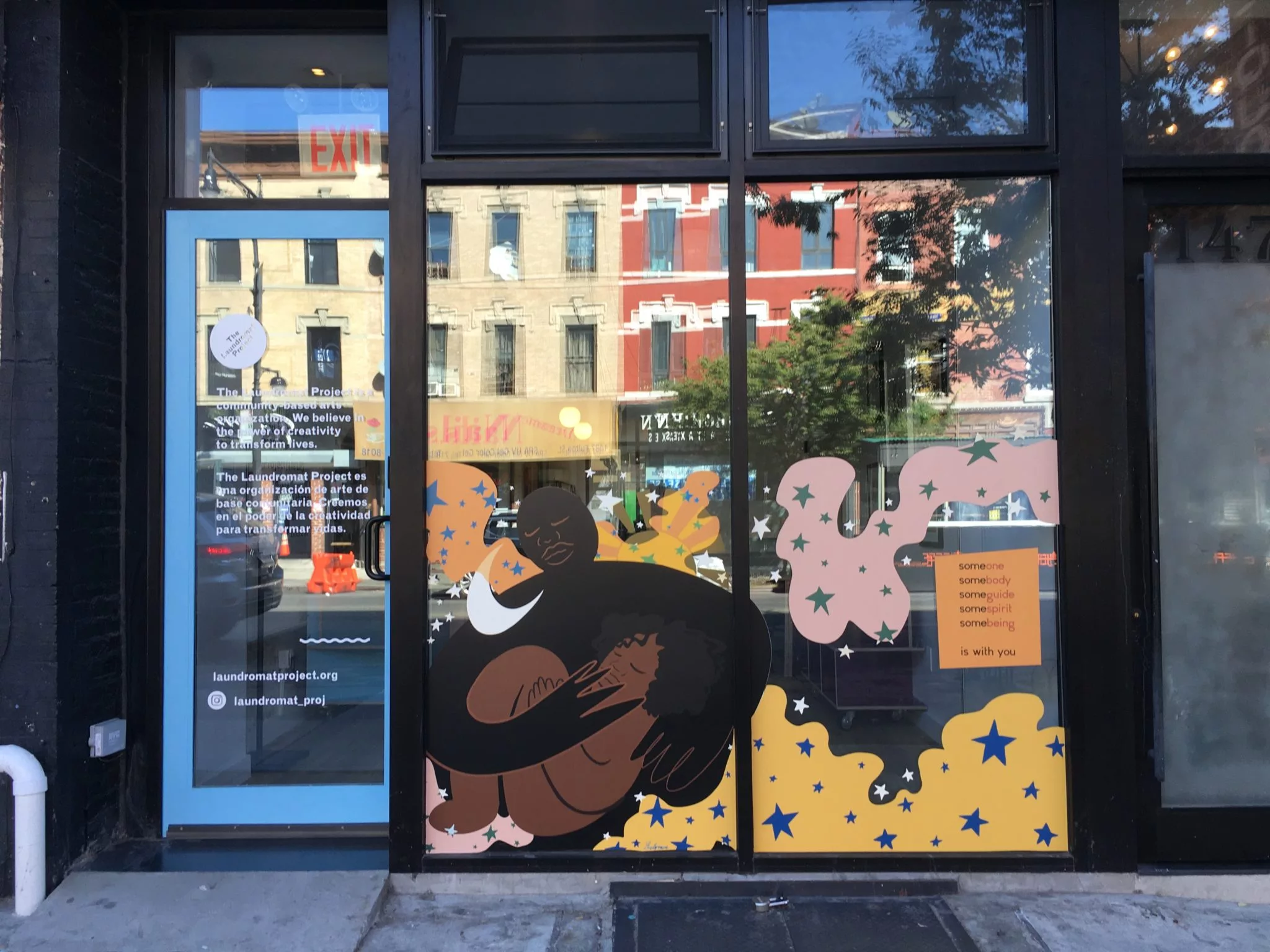

The Laundromat Project storefront, artwork by Destiny Belgrave (Courtesy the Laundromat Project)
You came on board as executive director 10 years ago. You’re leaving as you mentioned at the end of this year and you’ve signed this 10-year lease at Fulton Street. A lot of tens. It’s a very symmetrical moment. This feels like a significant pivotal moment for the LP. What are you doing next?
So yes, yes to 10 and all the symmetry. So my husband and I are taking 2023 New Year’s to New Year’s as a gap year. We are going to travel the world. We have about eight to 12 countries picked out and starting on December 30th we leave for Mexico.
That’s amazing. I mean I aspire to be you at this point. Can we talk about your background a little bit? You’ve sort of implied in previous interviews anyway that you’re sort of the least likely person to end up running an arts organization: You grew up in Lagos, in Nigeria, you came to the States as a teenager. I can’t imagine that was an easy transition or maybe it was. What was your arrival here like?
So I am Nigerian and American. I actually lived here until I was six. My mother’s African American from Maryland, some of Maryland stock. I have family all through the DMV including my Nigerian family. But my father went to Howard University and met my mother through his cousin. They married, had two daughters, myself and my sister. And when I was six we moved to Nigeria. So that was my first “wow, this is different.”
Oh, so you started here and then went okay, wow. That’s an even bigger shift.
It was. I moved from what had been Berkeley where my dad did his graduate MBA to Lagos as a 6-year-old and got to spend my formative years in a majority all-black country, which is a gift that keeps giving and one that I’m incredibly grateful for. And then moved back. My parents divorced when I was 15 and that was a little bit of a culture shock. I had been in an all-girls boarding school in rural Nigeria and I was in a public co-ed high school in Temple Hills, Maryland. I only did 12th grade here and then I ended up going to Florida A&M University first dropping out of business school because it turns out I did not want to be my father in the sense of falling in his exact educational footsteps. But instead found my way to liberal arts. I ended up going to Smith College in my mid-twenties.
In my final year, I have an African American Studies degree undergrad and in my final year I took a class on the history of African American art from Dr. Kelly Jones and she suggested to me that maybe I should look into a curatorial career because I loved art, I just hadn’t thought of it as a career. And I ended up at the Walker Art Center in Minneapolis, which was my graduate school. I was there as an intern for a year and got hired as a curator and worked on incredible projects, global scale exhibitions as well as local residency projects with the artist Nari Ward and Glenn Ligon and Sam Durant and a number of others that was incredible, was about connecting the art of that time to people in the Twin Cities. So that’s kind of how I ended up in the arts and I ended up getting a master’s in public administration from NYU. And I say that because I don’t have any art degrees, but I’ve made a whole career 25 years in now of doing this work.
You’re a curator of people.
Yeah.
Talk about Nari Ward because you mentioned him and how his work influenced you. Because there are echoes in the Laundromat Project of how space and neighborhoods and structures influence communities.
Oh, thank you so much for asking me about Nari, who’s still a dear friend that I love and adore and still learn from. Working with him was the first time that I learned about highways and the ways that the construction of highways and urban renewal are used too often to destroy and separate Black communities. So he ended up coming to the Twin Cities and becoming very early on fascinated with the Rondo Neighborhood.
Oh, yeah. Robert Moses was a master of slicing through neighborhoods and disrupting communities in New York.
Turns out there were skill sets all across the country. So over there in the Twin Cities, they had whoever their Robert Moses was who did the same thing to the Rondo Neighborhood. And that led him to thinking about, “What is home? How do we think about home?” It was such an important project for me and it was the first residency I worked on. So again, I was doing much more traditional white gallery space that we had this grant to do these residencies. I ended up being assigned to work on it and it turned out to change my life and the direction of my career.
We met with Korean immigrants, we met with Hmong immigrants who had been there since the ‘70s. We met with homeless LGBTQ youth at a local center. We met with architecture students from the University of Minnesota. We probably met with 15 to 20 different groups over this time to talk about what home was. There was one particular conversation we had that continues to be part of my life now, which was with this group of Korean elders who had grown up in Korea and ended up in a variety of different ways in the Twin Cities. They’re like, “hey, we get together on Tuesday afternoons to do games and be together,” and we were invited. And right at the top when Nari through a translator had explained what he was here to do and what he wanted to talk to them about.
And one of the elders, a Korean woman said, “Before we even begin answering, I just want to say thank you so much for asking us what our story is because no one has ever asked what that story is.” It’s a gift, right? People don’t owe us their stories. It’s a gift when they decide to share.
I love that and I love that that comes full circle in the work of the Laundromat Project. What has surprised you in doing this job?
I will say one of the biggest surprises for me, and I think a lot now about what it means to run a non-profit and to build a non-profit. When I started, I was employee number two. Our budget was about $200,000. I am now leaving 10 years later with a well-over $2 million annual budget and a staff of anywhere from 12 to 14 people. And one of the things that I’ve learned is about people, and people are complex beings, and that emotion is a huge part of the work. Emotion is a huge part of the work and it informs the work and the way we move and what we do and how we care for others.
Well, it’s interesting that you say that because in the corporate environments that I’ve been in, emotion is very frowned upon.
That is exactly what I’m responding to. That’s why I’m pulling it up. So specifically because I think we’ve all been taught in the West and in most of our trainings about what it means to be a professional. That emotion should not be in the room. It’s about draining emotion and instead it’s really just burying and repressing emotion and it comes out in really toxic ways if you don’t deal with it frontally. So that for me has been a huge learning. And I’m someone who is comfortable with vulnerability. I’m a crier and I’ve just had to accept that about myself and to allow a whole range of how people want to show up in emotional space. But I say that as an invitation to vulnerability and to care. That’s a strength and not a weakness.
So if I ever need a good cry. What is a typical day for you when you’re not running the LP? It’s a self-care day. Where do you go eat? Where do you get coffee? Where do you get a drink? Where do you go for a walk? Whatever it is.
Woo. I do have a free day tomorrow. So I live in Ditmas Park section of Flatbush. My sister-in-law lives just down a 15-minute walk away. My husband and I might go over and hang out on her porch and chat. I go to King Mother, which is a great wine bar, woman-owned wine bar in the neighborhood. One of the things that just happened to be true for me is I really love art. Like 99 percent of the time, if I’m doing something, it’s going to a gallery or going to a museum. I just went to see the Just Above Midtown show during the day on a Tuesday, it was amazing. It’s incredible. An early Black gallery from the seventies into the early ‘80s. So I’m oftentimes going to eat and going to see or enjoy art or just to be in nature. Shirley Chisholm Park is one of my favorites.
Oh, it’s beautiful.
Yeah, it’s such a fabulous park. And just to know that it honors Shirley Chisholm, who lived in Bed-Stuy as well. So, nature, art, and some good food.
Check out this episode of “Brooklyn Magazine: The Podcast” for more. Subscribe and listen wherever you get your podcasts.
You might also like 

















